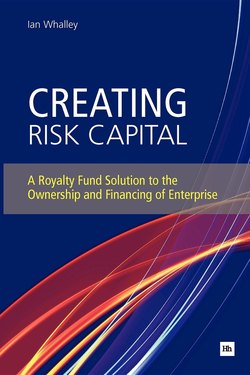Читать книгу Creating Risk Capital - Ian Whalley - Страница 28
На сайте Литреса книга снята с продажи.
Capital and credit
ОглавлениеAll active enterprises require financial resources, and systems of capital and credit have developed over the centuries in response to this need. Enterprises need this capital in order to operate: to employ people, to obtain premises, equipment, and stocks, to develop and market their products and services, to build a reputation, to trade and to cover the risk of any losses. This capital is deployed in assets of many kinds, depending on the type of business, from cash and equipment to know-how and inventory.
In Britain, capital and credit systems evolved in the course of the country’s development as an industrial and trading nation. Early influences included the systems and instruments adopted during the Renaissance by merchants in the maritime city of Venice and the industrial city of Florence. Financial markets developed further in the coffee houses of London and elsewhere to finance the expansion of commerce and industry, and to meet the needs of Britain and other nations in peace and war.
The early domestic manufacturing firms of the Industrial Revolution typically clustered together in embryonic industrial districts like Birmingham and Sheffield. As small scale, specialised and often interdependent concerns, their needs were limited and they relied heavily on financing from family, friends and acquaintances.
The growth of these firms was financed substantially from the profits they generated. As they grew and combined, their links with the founding families diminished, and their greater financial needs led to a requirement for external funds, which could be met by banks and, increasingly, the capital markets. The latter were developing into significant sources of capital from their modest origins in Amsterdam and Paris, in London coffee houses such as Jonathan’s and Garraway’s, and under a buttonwood tree at 68 Wall Street on Manhattan Island, New York.
The early development of overseas ventures and enterprises was financed in a similar way to domestic industrial firms. By the nineteenth century, the commercial banks led in the provision of short-term financing and became the main source of credit for the financing of commodity movements throughout the world. The placing of capital in securities like government and railway bonds was the domain of the issuing houses led by powerful private banks such as Rothschilds, Brown Shipley and Barings, while a multitude of financial, land and investment companies and trusts engaged in underwriting and promotion to provide the capital and management of pioneer enterprises.
These were the organisations involved in attracting the savings of British people into the tea and rubber plantations of India and Malaya, the mines of southern Africa, the railways of Argentina and the United States, the real estate of Australia, the oilfields of Imperial Russia and countless other enterprises throughout the world.
The huge changes which have taken place in the world since 1914 have been accompanied by corresponding changes in financial markets. New organisations have been established, existing firms have grown, merged or disappeared, while there has been a convergence of firms with quite distinct origins, cultures and functions to create the multi-purpose and multi-national financial institutions of today.
In Britain, the main financial organisations which now marshal and channel the savings of the public are banks and building societies, institutions like insurance companies and pension funds, and stock market firms. Complementing these are finance houses, leasing companies, investment trusts, private equity, development and venture capital firms, fund managers and a host of specialised concerns and intermediaries, creating a web of organisations which compete and co-operate in many ways with diverse and sometimes overlapping functions. Many of them are integrated under common ownership and/or management: thus banks have combined with building societies, and they own leasing, hire purchase, venture capital, fund management, investment banking and trade finance subsidiaries.
In the financial and enterprise systems of the world, despite many cross-influences and much convergence, institutions still reflect the history and cultures of their countries of origin and therefore differ in important respects. In France, Germany and Japan, for example, the state and the major banks have a tradition of close and co-operative financial and management relationships with industry. In the USA and Britain, by contrast, the emphasis is on efficient public securities markets backed by transparency and strong regulation. [18 ]
